The “modern” style of interior design was a hallmark of the mid-20th century, and it still remains quite popular today. With its emphasis on clean lines, functional materials, and practicality, it can represent the apex of both comfort and beauty–perfect for gentlemanly spaces! Here’s our list of modern interior design classics that will help your space look both sleek and timeless.
This article is a sequel to one we produced earlier on home design from a bit further back in history. If you’d like to look at more classically inspired pieces, be sure to check out our list of 11 Interior Design Classics.
Contrary to what you might think at first, though, decorating your space in the modern style doesn’t mean appointing it like the headquarters of a James Bond villain, or like the Brady Bunch home! There are several more subtle modern design touches that can be effortlessly implemented in a gentleman’s home. At the same time, we recognize that the modern style can be polarizing.

So, whether you want to go full Mad Men with your interior design or just add a few modern touches, we think that there’s a lot to love in this versatile style.
The History of Modern Interior Design
Jumping into the background for today, we should first clarify that when we say “modern,” we’re not referring to the interior design styles of the modern day. Rather, the term “contemporary” will be used more often for styles of the present day.
The modern style started developing at the beginning of the 20th century and came into its own in the middle of the century. Overall, it was a reaction of sorts to the heavy, sumptuous, and ornate styles of the late Victorian Era, which by this time, were viewed as gaudy and overwrought.
By the 1890s, decorating styles like “mission” and “arts and crafts” were already starting to eschew some of these features, but the modern style really started coming into its own after World War I. And, as you might expect, modern interior design was often influenced by modern architecture with styles like internationalism and Bauhaus, emphasizing that buildings ought to be made from practical materials, free from ostentatious decoration, and designed, above all, for comfort and utility.
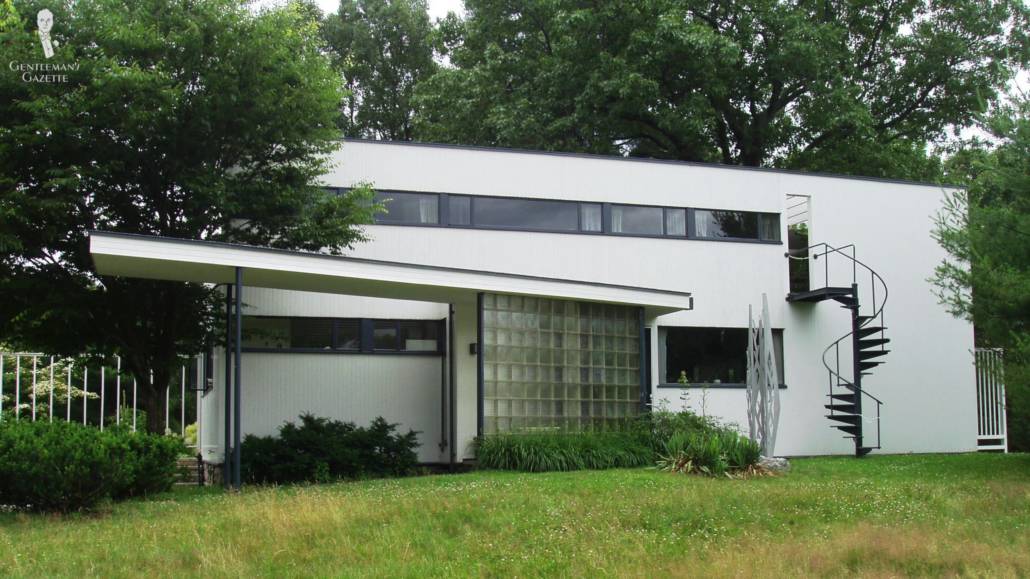
In fact, American architect and the so-called “Father of the Skyscraper,” Louis Sullivan, presaged this line of thinking when he declared in 1896: “That form ever follows function. This is the law.” These tenets applied to modern furnishings, as well, with many of these designers also designing furniture.
Following World War II, modern furniture became extremely popular as it was relatively cheap to produce and could be easily procured by middle-class families. In the United States, mid-century modern became quite popular. This style was exemplified by heavy-grain wood panels, matte leathers or fabrics, organic forms, tapered legs, and simple geometric shapes.
For examples of these kinds of interiors, you can look at early sitcoms or heist movies, or the films of The Rat Pack made in the 1960s.
After the ’60s, the modern style began to bifurcate more and more into sub-genres, ranging from the kitsch of the 1970s to the minimalism of the 1980s. With all that said, though, the modern style remains popular today.
Characteristics of The Modern Style
The modern style actually encompasses several different sub-genres of design, but through all of them, there are a certain amount of fundamental principles.
Firstly, it emphasizes open and integrated spaces where all of the elements are functioning together, including the use of natural light.
Next, it’s practical and comfortable, utilizing simple shapes and forms, as well as constructions, to satisfy its users. It also emphasizes clean, horizontal, and vertical lines, but keep in mind that clean doesn’t always have to mean straight. So, simple, rounded curves can also be used.
It takes advantage of natural and sustainable materials whenever possible. So, think of things like wood, leather, stone, and metal. It often foregoes bold colors and patterns in favor of natural and neutral tones, and it takes advantage of naturally occurring textures to create sensory interest.
Modern Design Pieces for Gentlemen: 1. Barcelona Chair
This chair was designed by German-American architect Ludwig Mies van der Rohe and German designer Lily Reich for 1929’s International Exhibition in Barcelona, Spain, for which it came to be named. It represented an intentional effort to blend luxury and utility, and the King of Spain even used it as he watched the opening of the International Exhibition.
It featured pigskin leather over a steel frame, and Knoll Incorporated was the company to manufacture it for the mass market. It’s been in production almost continuously since 1929, and in 1950, the design was updated to feature a form made from a seamless piece of stainless steel, which gives the chair its iconic continuous curve.
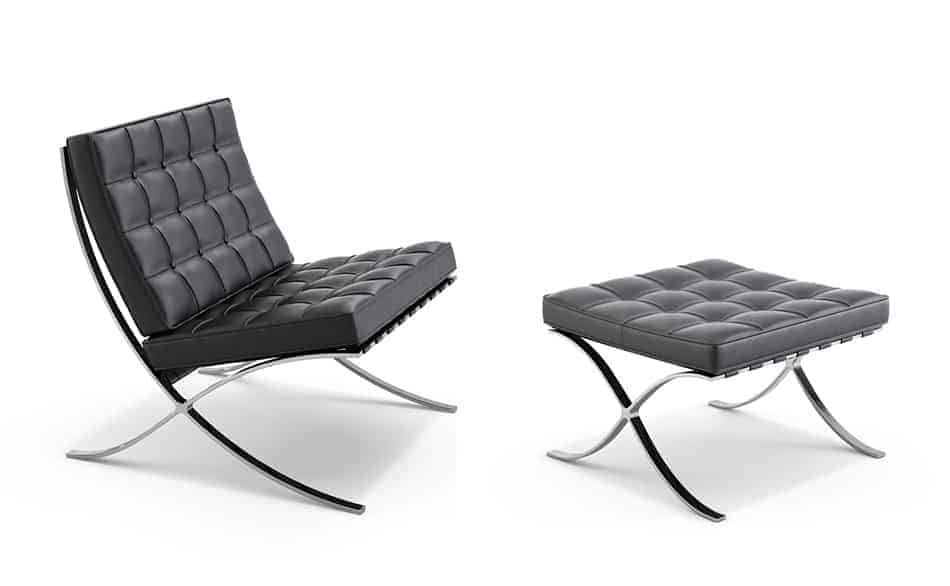
These chairs are ideal for both reading and conversation and, as such, they’d be a great choice for a library or a living room. You can pair them with similarly sized chairs or use them to offset a larger sofa. Best of all, due to its unassuming silhouette and simple lines, it can be seamlessly integrated into almost any design scheme.
When selecting your leather color, natural colors are going to blend more with traditional design schemes, whereas choosing something bolder will give you a more truly modern air.
2. Eames Lounge Chair
Fans of the TV show “Frasier” might be familiar with our next pick–but no, it’s not a psychiatrist’s couch, it’s the famed Eames Lounger! The iconic piece of American furniture and its matching ottoman was designed by married collaborators Charles and Ray Eames in 1956 for the Herman Miller Company.
It was made from premium leather and layered plywood and was designed to communicate that a chair made from modern materials with a simple design could still make for a luxurious piece of furniture.
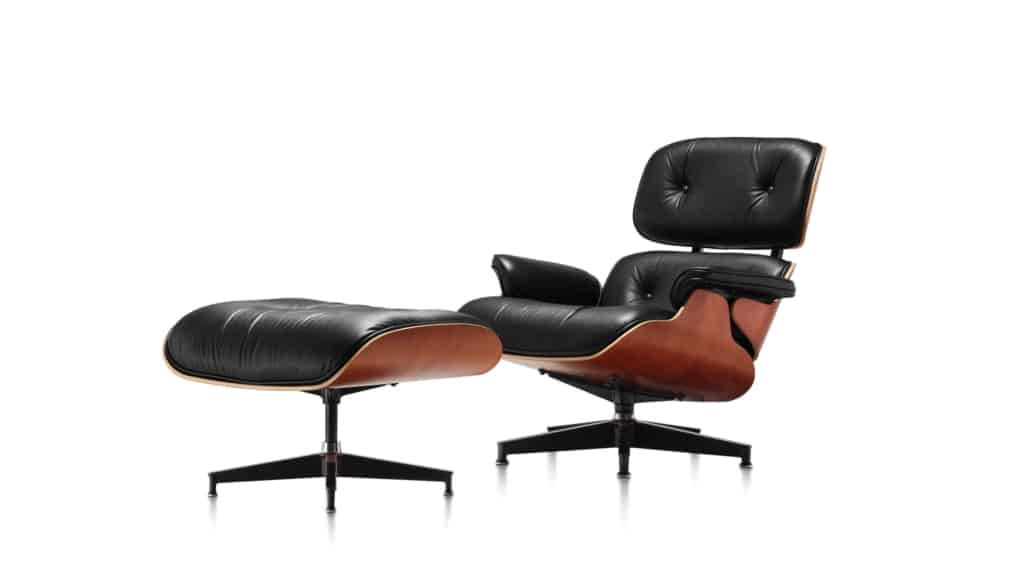
It originally retailed for around $300, closer to $3,000 in today’s money, which made it affordable enough for the upper-middle-class families, who were often the tastemakers for American society at that time.
It was an immediate hit with the American public. It’s been in production constantly since its debut, and it also comes in a wide variety of colors to suit any space.
It does have a relatively large footprint, so you might want to consider setting it apart from other pieces of furniture in its own nook or area of the room. And when integrating it with other pieces of furniture, we’d suggest pairing it with pieces that are either noticeably larger or noticeably smaller as this will avoid the appearance of clutter.
3. Knoll Sofa
Since we’ve tackled two chairs for our number three pick, let’s turn to a sofa designed by another one of the greats of American interior design.
This would be the Knoll sofa, designed by Florence Knoll, an American architect, designer, and manufacturer who helped introduce many iconic European furniture designs to mass markets. Some of which are the Barcelona chair we mentioned before and the Eero Saarinen tulip chair. She also designed many furniture pieces, including the sofa that still bears her name.
She wanted it to appear streamlined and sleek, so she avoided any unnecessary details and focused on the quality and construction of the materials. With its chrome base for durability and reinforced wood frame to prevent sagging, it became a durable and long-lasting piece in many American interiors.

It’s also available with your choice of either leather or fabric upholstery for maximum versatility. It works well in front of a television or as the largest piece in a conversation area like a living room, den, or drawing room. Settee varieties are also available for smaller spaces.
With its simple rectangular footprint and unassuming design, it’s able to blend into almost any design scheme. And due to its sturdy frame and simple lines, it’s very good at pairing with and toning down more dramatic pieces such as Eero Aarnio’s ball chair or Marcel Breuer’s Wassily chair.
4. Pop-up Bar
Opinions about drinking, especially in the United States, underwent a radical shift over the course of the 20th century, and as a result, new pieces of furniture popped up following this. One such piece is the pop-up bar, which looks like an ordinary cabinet or cupboard but can be opened to reveal a miniature bar setup.
As cocktails became increasingly popular, pop-up bars were a space-saving way to store one’s cocktail materials. And for propriety’s sake, they could also discreetly appear like any other piece of furniture. Indeed, even if you don’t drink, you might consider incorporating a pop-up bar just as a way to have more general storage.

As far as placement is concerned, you may actually want to select a space based on the piece. Taking visual complexity into consideration, for example, a bolder piece will look visually larger than a more subdued one.

As pop-up bars continued to be popular well into the 1980s, a wide variety of different styles and shapes were produced. But, if after all is said and done, you don’t think you’ve got the room or the style necessary in your space to incorporate a pop-up bar, then our next pick might be the answer for you.
5. Bar Cart
Inspired by the service trolleys used by waiters, bar carts are meant for the easy storage and moving of drinks, their accoutrements, and their glasses. And they also come in a variety of sizes depending on what you might need.
Although they’re designed to be rolled around, it’s also perfectly acceptable to keep a bar cart stationary, as we do here in the Gentleman’s Gazette Studios.
Like pop-up bars, bar carts were also quite popular throughout the 20th century, and as such, they come in several different styles. With their gorgeous metallic detailing, art deco bar carts are extremely popular, and they’re definitely a statement piece.
For something more neutral, though, you could consider the wood finish and the clean lines of a mid-century modern bar cart.
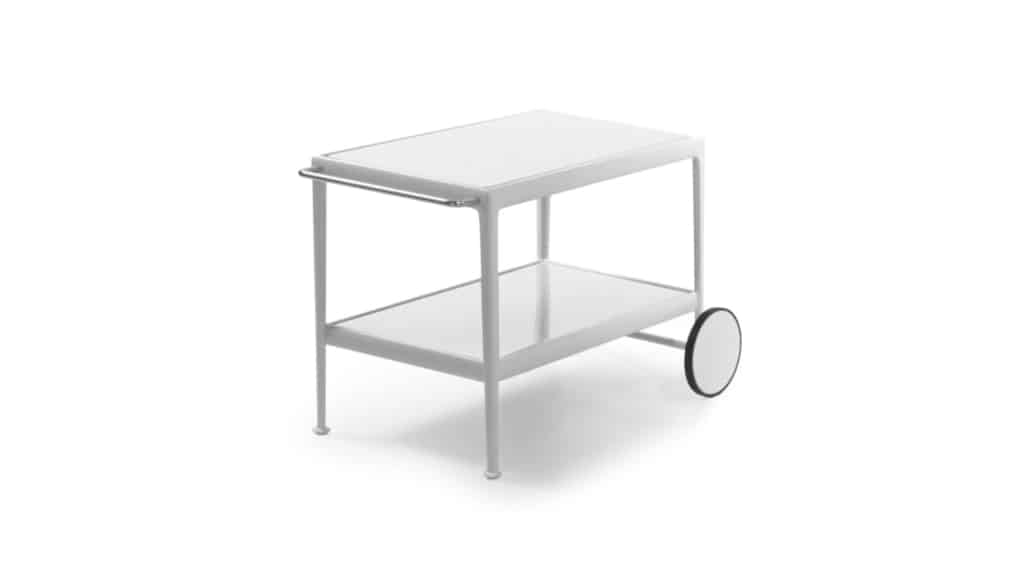
And for the ultimate in understated utilitarianism, you could consider the bar cart depicted above, designed by Richard Schultz in 1966 for the Knoll Company.
6. Arco Floor Lamp
Few lamps are more recognizable and draw more extreme opinions than the Arco floor lamp. Designed for the Flos Company in 1962 by the Castiglioni brothers, Pier Giacomo and Achille, it consists of a bulb with a large metallic shade connected by an arm to a heavy counterweight.
It was originally made from spun aluminum, with the counterweight made from Carrara marble. It was intended to provide direct light to a specific area in an unobtrusive and elegant way. Critics say, though, that it looks like a light that belongs more on a spaceship than in your living room. You make the call.

So, while this one is an especially daring piece and only you can decide if it’s right for you, the Arco floor lamp can help to improve lighting where ceiling lights and other lamps aren’t practical, instantly add an unforgettable pop to a drab space, or tie together a room with other odd pieces.
In other words, because the Arco floor lamp is so unusual, having it in a space with other pieces of furniture from different design schools will reinforce the impression that your tastes are deliberate and eclectic rather than just a mishmash of different pieces.
7. Houseplants
During the day, of course, you’ll probably prefer to rely on lighting your space with natural sunlight, which brings us on to our next design tip: incorporating houseplants.
Despite its associations with industrial materials, nature has always played an important part in the aesthetics of the modern design movement. As we’ve already mentioned, many modern homes feature accents in wood and stone, and some even have extensive water features.
We’re not saying you should install exposed redwood beams or a trickling fountain in your main room, but there are ways to incorporate a more natural touch into the modern style.
If you choose to use house plants in this way, the modern style favors deep, rich greens rather than excessively vibrant colors. So, we’d suggest using leafy plants rather than flowering ones. As such, here are a few suggestions.
- Fiddle-leaf Fig Tree or Ficus lyrata, where the deep greens of the leaves are a pleasure to behold but be aware that it does need a lot of light.
- African spear plant or Sansevieria cylindrica, where the unique spheres of the plant blend nicely with the linear forms of the modern style, and this one doesn’t require much light or watering.
- Split-leaf Philodendron or Monstera deliciosa, where the lilting organic curves of the unique philodendron can add a subtle organic touch to any modern room.
Considering placement, you’ll want to value clean lines here. So, consider flanking doorways or large pieces of furniture with plants. You can also create balanced, symmetrical compositions on tabletops or elsewhere within a room.
Also, to help delineate spaces and create more order, you can consider using plants as dividers. There are specialty planters available for this purpose, but you could also simply make your own with a long, low planter or a series of pots.
If they’re arranged on a table or another linear surface at the edge of a room, as the plants grow, they’ll create a leafy green wall of sorts to confine the space a bit.
Taking care of real plants does, of course, require a bit of time and effort, but we think that this investment is worth it to liven up your spaces. Or, as we do here in the studios and elsewhere around Raphael and Teresa’s home, you could also consider high-quality faux plants.
8. Modern Art
As you show off your green thumb, you might also consider showing off your artistic tastes. But, as there are a few considerations here as well, we’ll now go into displaying modern art.
If you’re familiar with famous modern homes, you may have noted that the walls often tend to be barer as the clean and simple lines of the modern movement can be somewhat at odds with a cluttered, jumbled assortment of many different framed art pieces.
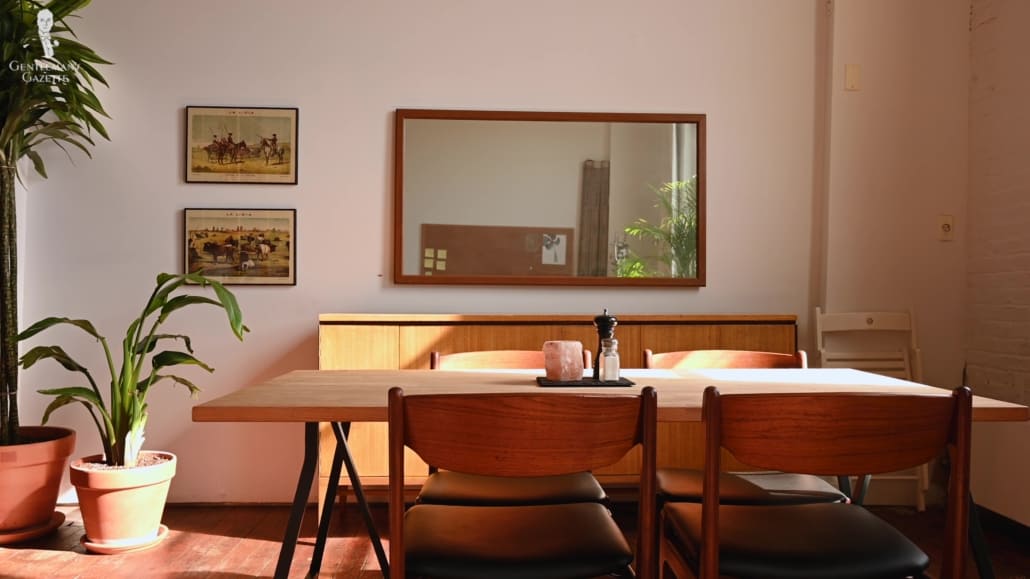
However, this doesn’t mean that modern homes are completely without art. Rather, they’re often just meant to be central focal points in a room. Stated in another way, you’ll want to focus on quality over quantity and make design decisions like putting a large piece of art opposite a window or at the end of a hallway.
If you want to display multiple pieces, consider a regimented arrangement where you hang similarly sized and framed pictures in an orderly row or otherwise symmetrical compositions. In general, the modern style favors unframed pictures or simple frames in black, white, or metallics.
Regarding sculpture, similar rules apply here, where you should consider having one large focal piece rather than a variety of small statuettes. Or, if you do have multiple smaller pieces, you could take another design cue from a certain doctor from Seattle and display them in a compartmentalized case or cabinet.
When it comes to what art you’re displaying, though, don’t feel that just because you’re working within the modern style of design for your space that you must choose a modern art piece. The simplistic approach used in the modern style for displaying art will draw attention to any art piece regardless of its own style.
Buying Modern Interior Design Pieces
Speaking art, then, you could consider acquiring an original piece from a local artist. We should note here that famous modern art pieces purchased new tend to have relatively steep price tags anywhere from $3,000 to $15,000. So, you should keep this in mind and decide whether this is truly the right decision for you.
Famous pieces of modern furniture can be somewhat expensive secondhand due to their popularity, and, of course, you should also keep an eye out for forgeries. Helpfully though, there are guides available online that can help you to discern a fake from an original.

Speaking of reproductions, lower-quality furniture manufacturers will often pump out facsimiles of these famous pieces that are lower in quality. Therefore, it’s always best to test out a piece of furniture in person so that it looks, feels, and performs the way you want it to.
There are, of course, some manufacturers who more closely adhere to the design elements of the originals while not necessarily being those exact pieces. So, this could be a more budget-friendly option to consider if that’s valuable for you.

As with many other things, research is going to be your best friend here. So, we hope this guide has helped you understand the fundamentals of the modern school of design and introduced you to some of its most famous furniture pieces.
Conclusion
Most of all, though, we hope we’ve given you some good ideas on creating and constructing a space that works well for you. As Charles Eames himself put it: “The role of the designer is that of a perfect, thoughtful host anticipating the needs of his guests.” And after all, who visits your own home more than you do.
Outfit Rundown
I’m wearing a relatively casual outfit, good for spending some time around the house. The central element is my blood orange sweater from Hawes & Curtis, under which I’m wearing a shirt featuring a small microgrid pattern of orange, green, purple, and blue on a white ground.
The shirt has French cuffs, but I’m wearing simple black links in them today and I’ve got the cuffs configured in a barrel style to fit more easily under the sleeves of my sweater.
My trousers are in a taupe shade somewhere between brown and gray and my socks from Fort Belvedere are our two-tone shadow-stripe models in charcoal, gray, and orange to harmonize with the trousers as well as my sweater. Rounding out the outfit today are my tobacco brown suede loafers, which also harmonize with the overall color palette.
And, of course, you can find the socks I’m wearing in the Fort Belvedere shop along with a wide array of other stylish classic men’s accessories.




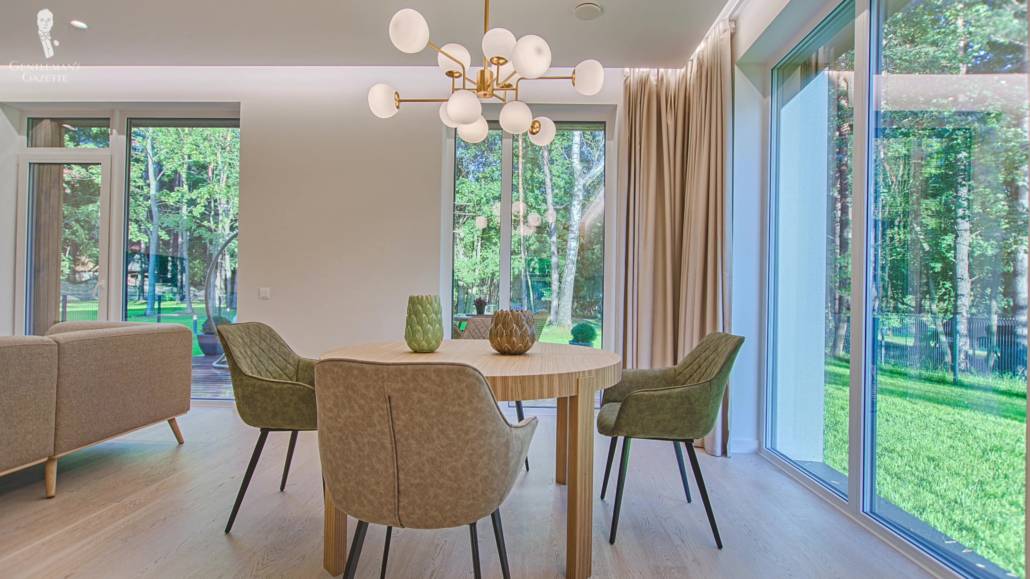





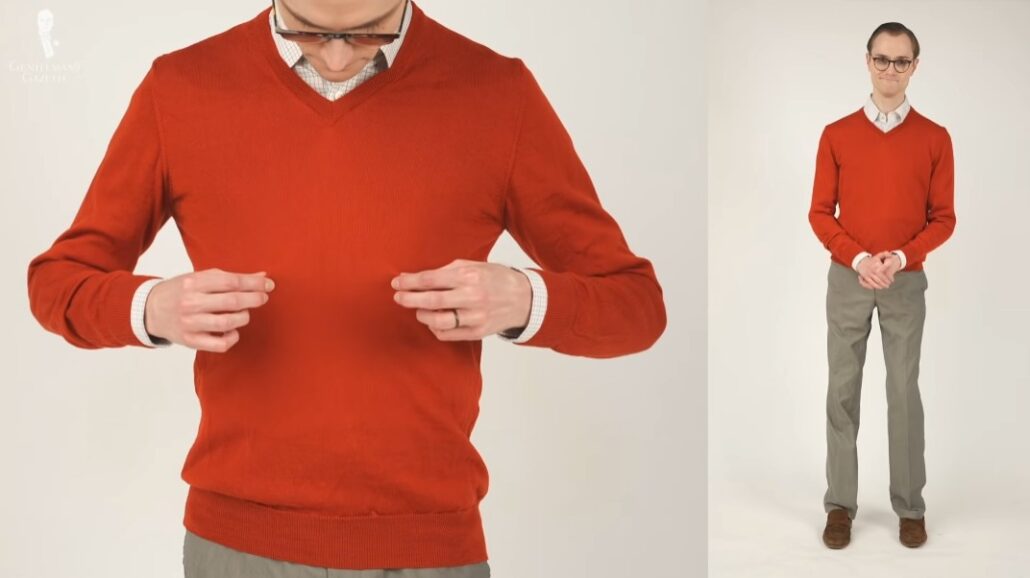

Love Bauhaus. Simple is good. I’d bombard you with witty maxims on the topic, but that would be rather ironic.
Barcelona chairs suck. They may be all artsy and popular, but they’re horrific as seating surfaces (again, read The Chair by Galen Cranz).
My bar cabinet is a slightly modified antique radio cabinet. It’s not perfect, but I wouldn’t trade it for anything.
And yes, houseplants are awesome. Aloe plants are nice to have around to help with sunburns and such.
I’m not getting updates via your RSS feed anymore – has something changed? (I use the Feeder extension in Chrome).
Hmm, you say “Modern” but the pictures in the article scream “Mid-century”. I’m seeing a bit of cognitive dissonance here. Perhaps to the Gentleman’s Gazette staff progress stalled around 1960? ;)
This seems to drift far afield of the intent of this blog. I personally know interior designers featured in “Architectural Digest” magazine, the simplicity of this presentation is just that.
Ralph Lauren Home has always been a go-to interior design for me. Very classic and warm at the same time. The only drawback is that when I sit on the sofa, I have the uneasy sensation that my father will come in at any moment just to complain about my report card.
In the next to last picture in this essay, regarding the art on the wall, does anyone know what the one of the woman with blonde hair is? I saw it in the video and thought it was great.
Hi David, glad you enjoyed the artwork! The piece is called “Woman With Dove” (1931) by the artist Tamara De Lempicka.
Thank you for sharing this amazing blog. Looking awesome.